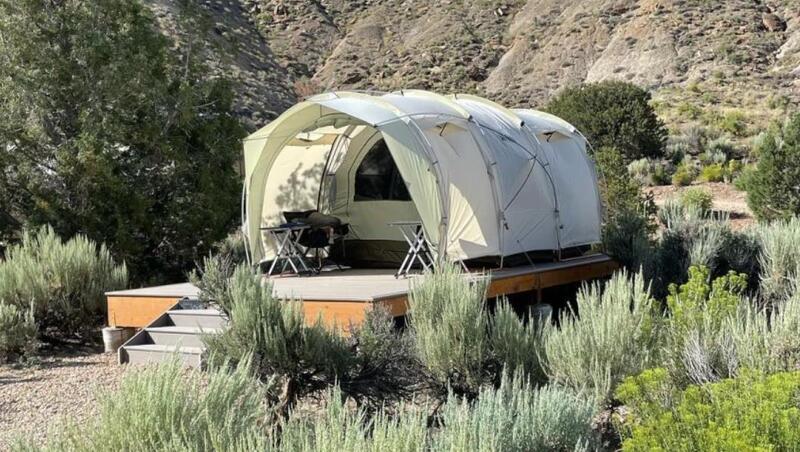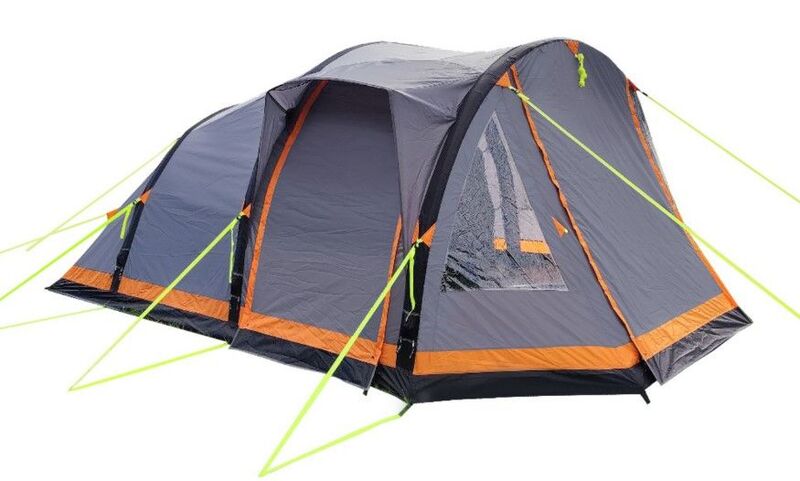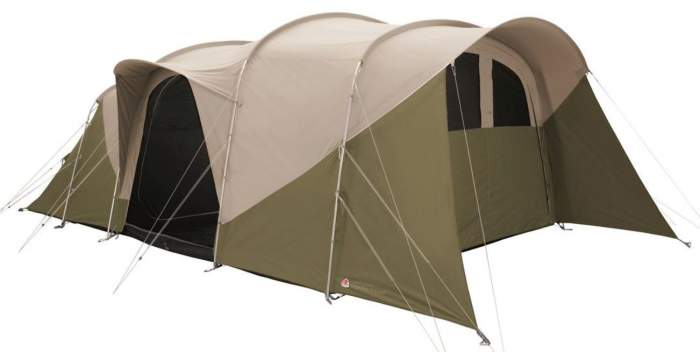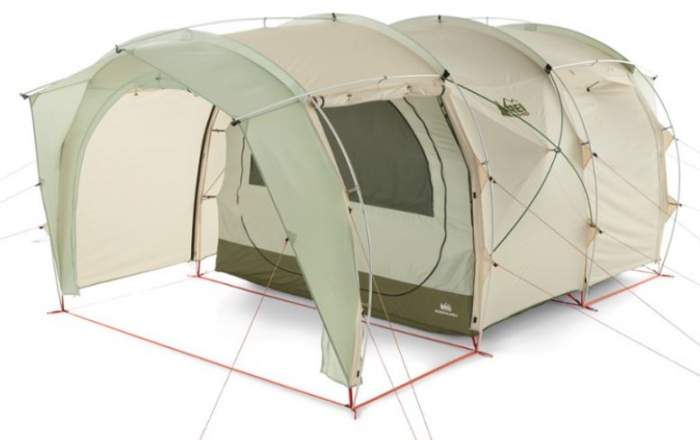In an era marked by heightened environmental awareness, the choices we make as consumers hold significant weight. As nature enthusiasts and responsible global citizens, the way we approach outdoor activities, including camping, is evolving.
The clamor for eco-friendly solutions resonates in every sector, including the realm of family camping. Amidst the vast array of camping gear, the focus now turns to the question raised in the title. This inquiry serves as the gateway to exploring sustainable options in the camping industry.
There are indeed eco-friendly family camping tents on the market but they are still rare. Such tents are made of recycled or natural biodegradable materials, and some of them are also bluesign approved.

Importance of Eco-Friendly Camping Tents
Traditional camping tents, often made from non-biodegradable materials, contribute significantly to pollution and waste. The importance of transitioning to eco-friendly family camping tents cannot be overstated.
By opting for environmentally responsible choices, we actively reduce our carbon footprint, minimize plastic usage, and promote sustainable manufacturing practices. These tents not only offer a comfortable haven amidst nature but also embody a commitment to conserving our planet.
Making the switch to eco-friendly camping tents signifies a conscientious step towards a greener, healthier Earth, setting a positive example for future generations of outdoor enthusiasts.
Features of Eco-Friendly Family Camping Tents
A. Eco-Friendly Materials
Eco-friendly family camping tents are crafted from a diverse range of sustainable materials, each contributing to their eco-conscious design.
Recycled polyester, derived from post-consumer plastic bottles, finds its way into the construction of these tents, transforming waste into a valuable resource. One great example of this type is the OLPRO Abberley XL Breeze 4 Berth Inflatable Tent in the picture, they claim it is all made of recycled bottles.

In this site I have a separate text about Vango Sentinel fabric. If you follow the link you will realize that one specific type they make is their Vango Sentinel ECO which, as they claim is a 100% recycled material.
The same holds for Dometic with their Redux material. From the statements on their site it follows that the Dometic Rarotonga, Leggera and Auto tents are all the Global Recycled Standard certified. They describe these tents as ‘Conscious Choice’, made of their Weathershield 100% recycled polyester fabric.
Organic cotton, grown without harmful pesticides and chemicals, forms the base fabric of some tents. This ensures a biodegradable and toxin-free shelter.
Many cotton tents are available in the category Canvas Tents here in the site, but you will rarely find any statement about the cotton origin. But even without such a statement, you know that you will have a shelter built mainly from a natural and biodegradable material.
However, note that such tents practically always have some synthetic material used for the floor. Most frequently this is a thick polyethylene. So if you want a natural material only, you will have to go for a floorless cotton canvas tent, but those are rare. In this case you do not have protection from crawling insects.
Yet another detail important mentioned here is coating. Many great canvas tent are without coating, so they rely on natural features of cotton fibers that swell when wet and make the tent waterproof.
So when you read in specifications that such a cotton canvas tent is breathable, this means it is without coating and this should be your choice if you want a tent that has some of eco-friendly features. The Robens Eagle Rock TC 6+2XP Tent in the picture is one of them. But there is more to the issue of coating, see below.

Sustainable bamboo, known for its rapid growth and minimal environmental impact, is utilized in some of tents poles and structural elements, adding strength and durability to the tent while being gentle on the Earth. But if you follow this industry, you know that such options are very limited.
All in all, these materials not only reduce the demand for new resources but also minimize the environmental strain associated with traditional tent production methods.
B. Eco-Friendly Coatings and Treatments
To enhance the longevity and functionality of eco-friendly family camping tents, manufacturers employ eco-conscious coatings and treatments.
Water-resistant coatings, often based on environmentally safe compounds, shield the tent fabric from rain, keeping occupants dry without compromising aquatic ecosystems.
UV-resistant treatments safeguard the tent material from harmful sun rays, prolonging its lifespan while reducing the need for frequent replacements.
Additionally, eco-friendly mildew-resistant treatments inhibit the growth of mold and fungi, ensuring the tent remains hygienic and odor-free even in damp conditions. These coatings and treatments strike a balance between performance and environmental preservation, allowing campers to enjoy nature responsibly.
Many of these features are in the category of bluesign, so make sure you search for tents that have a bluesign approved label. Their criteria are graphically presented in the picture:

As you realize, it is not only about recycling. Water and energy consumption, and workers conditions are also some of the factors to bear in mind.
If you are curious about tents satisfying these highest standards, you have a great example shown below, the REI Co-op Wonderland X Tent is one of them.

C. Innovative Design Elements
Eco-friendly camping tents showcase innovative design elements that prioritize natural ventilation and lighting, minimizing the reliance on artificial sources.
Strategic placement of mesh panels and windows allows for optimal airflow, promoting cross-ventilation within the tent. This not only enhances comfort for occupants but also reduces the need for power-hungry fans or air conditioning devices.
Furthermore, thoughtfully designed skylights and transparent panels harness natural daylight, illuminating the interior during daytime hours. By harnessing sunlight effectively, campers can minimize the use of energy-consuming lamps and lanterns, embracing a camping experience intimately connected to the rhythms of nature.
These design innovations exemplify the fusion of sustainability and practicality, redefining the standards for eco-friendly family camping tents in the modern era.
Eco-Friendly Camping Tent Brands
You have already seen some examples above. So the brands behind them are REI, OLPRO, but also The North Face that has smaller eco-friendly tents, and not many more in the tents industry.
But note also that, when you check in specifications, not all tents from these brands are described as eco-friendly.
In this list you can see the current bluesign partners, more than 800 of them. You will see some important outdoor names like Nikwax, Vaude, Salewa, Salomon, Thule, The North Face, Outdoor Research, Osprey, Patagonia, Nemo, Marmot, Berghaus, Jack Wolfskin, Columbia, Deuter, Adidas, etc.
Many of them are not in the tents industry, but outdoors activities include lots of other stuff. So you might bear in mind these brands when you buy your other outdoor equipment.
Conclusion
In conclusion, the quest for eco-friendly solutions has permeated the camping industry, prompting a fundamental shift in the way families approach outdoor adventures. The transition from traditional tents to eco-friendly alternatives is not merely a matter of personal preference; it is a conscientious step towards a greener, healthier Earth.
By embracing eco-friendly family camping tents, crafted from organic cotton, recycled polyester, and sustainable bamboo, we actively participate in reducing our carbon footprint and promoting responsible manufacturing practices. These tents not only provide a sanctuary amidst nature but also symbolize our commitment to conserving the planet for future generations.
So in answer to the question raised in the title, yes, there are eco-friendly family camping tents available. But the impression is that currently the choice is quite limited, and we can only hope that this will change in future. Brands like Dometic, REI, OLPRO, and The North Face are among those who have eco-friendly tents on the market.
Please let me know if you have questions or comments, there is a comment box below. Subscribe to my weekly newsletter and stay informed, the subscription form is below. Thank you for reading.
Leave a Reply